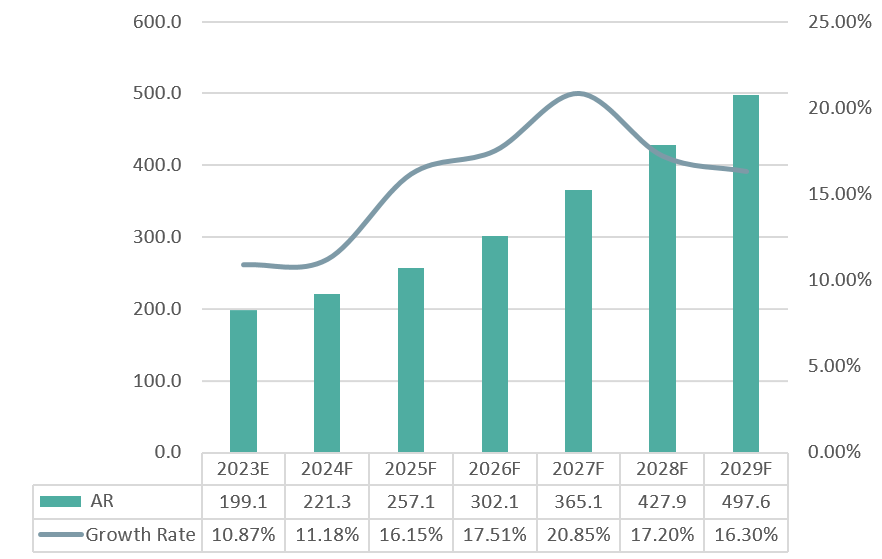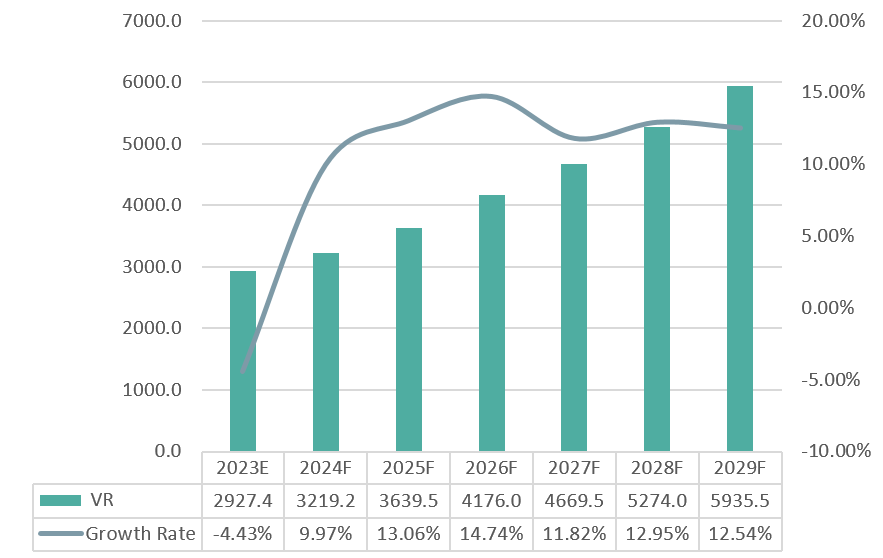1. Introduction of AR, VR and MR Accessories Applications
AR: Augmented reality (AR) is an enhanced version of the real physical world that is achieved through the use of digital visual elements, sound, or other sensory stimuli and delivered via technology. Augmented reality uses the existing real-world environment and puts virtual information—or even a virtual world—on top of it to enhance the experience. Augmented reality either makes visual changes to a natural environment or enhances that environment through adding new information.
VR: Virtual reality is a fully digital, computer-generated, three-dimensional experiential environment. Unlike traditional user interfaces that only allow users to view a screen, VR allows the user to step inside an experience, to be immersed in and interact with a 3D world that can either simulate or differ completely from the real world. By simulating the senses as possible – such as vision, hearing, and sometimes touch – a computer is transformed into a gatekeeper to a new world.
MR: Mixed reality (MR) is a user environment in which physical reality and digital content are combined in a way that enables interaction with and among real-world and virtual objects. MR emphasizes integrating virtual objects and physical environments, merging the real world and the virtual world to create a new visual environment. For example, a headset form factor follows the user’s gaze and maps the user’s physical surroundings and software then uses deep learning algorithms to align digital content with specific areas of the map. MR programming allows digital objects to interact with physical objects and people to interact with digital objects as if they are physical.
2. AR, VR and MR Accessories Market Revenue and Share Analysis by Major Applications 2023-2029
Table Global AR, VR and MR Accessories Market Revenue (Million USD) Forecast, by Application
|
|
2023 |
2024 |
2025 |
2026 |
2027 |
2028 |
2029 |
|
AR |
199.1 |
221.3 |
257.1 |
302.1 |
365.1 |
427.9 |
497.6 |
|
VR |
2927.4 |
3219.2 |
3639.5 |
4176.0 |
4669.5 |
5274.0 |
5935.5 |
|
MR |
95.4 |
112.2 |
142.5 |
177.4 |
219.2 |
269.3 |
305.3 |
|
Total |
3221.9 |
3552.8 |
4039.2 |
4655.5 |
5253.7 |
5971.2 |
6738.4 |
AR: Revenue from AR applications will grow steadily from 2023 to 2029. The revenue is expected to grow from $199.1 million in 2023 to $497.6 million in 2029, indicating a strong growth potential for AR technologies in the market.
VR: VR applications are projected to maintain the highest revenue among the three categories, with a significant increase from $2927.4 million in 2023 to $5935.5 million in 2029.
This suggests that VR will continue to dominate the AR, VR, and MR accessories market, reflecting its widespread adoption and the growing demand for immersive experiences.
MR: MR applications are expected to show growth, albeit at a slower pace compared to AR and VR, increasing from $95.4 million in 2023 to $305.3 million in 2029.
The lower revenue projection for MR compared to AR and VR could indicate that MR technologies are still emerging and have not yet reached widespread market adoption.
Table Global AR, VR and MR Accessories Revenue Market Share Forecast, by Application
|
|
2023 |
2024 |
2025 |
2026 |
2027 |
2028 |
2029 |
|
AR |
6.18% |
6.23% |
6.37% |
6.49% |
6.95% |
7.17% |
7.38% |
|
VR |
90.86% |
90.61% |
90.11% |
89.70% |
88.88% |
88.32% |
88.09% |
|
MR |
2.96% |
3.16% |
3.53% |
3.81% |
4.17% |
4.51% |
4.53% |
|
Total |
100.00% |
100.00% |
100.00% |
100.00% |
100.00% |
100.00% |
100.00% |
AR: The market share for AR is projected to increase slightly from 6.18% in 2023 to 7.38% in 2029.
This indicates a steady growth in the adoption of AR technologies, suggesting that AR applications are gaining traction in the market.
VR: VR is expected to maintain the largest market share, starting at 90.86% in 2023 and decreasing to 88.09% by 2029.
Despite a slight decrease, VR’s dominant market share reflects its widespread use and the significant investment in VR technologies.
MR: MR’s market share is forecasted to grow from 2.96% in 2023 to 4.53% in 2029.
This increase, though smaller compared to AR and VR, indicates that MR technologies are also gaining ground in the market, albeit at a slower pace.
3. AR, VR and MR Accessories Market Consumption Value and Growth Rate Analysis by Major Applications 2023-2029
Figure Global AR, VR and MR Accessories Consumption Value (Million USD) and Growth Rate of AR (2023-2029)

The consumption value of AR is expected to grow steadily from $199.1 million in 2023 to $497.6 million by 2029.
This indicates a strong and increasing demand for AR accessories, reflecting the growing adoption of AR technology across various industries and consumer markets.
Figure Global AR, VR and MR Accessories Consumption Value (Million USD) and Growth Rate of VR (2023-2029)

The consumption value of VR is expected to start with a slight decrease in 2023, followed by a steady increase through 2029, reaching $5935.5 million.
This indicates that despite an initial setback, the VR market is poised for a strong recovery and growth, reflecting the resilience and potential of VR technology.





